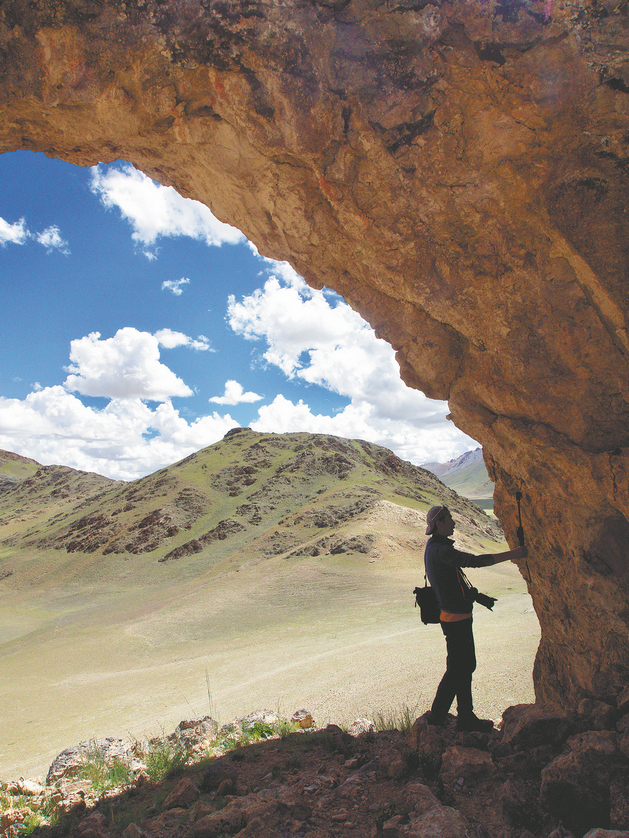

Field expert
In studying the known rock paintings and looking for new ones, all the while consulting experts in the field, Zhou has become something of an expert himself and he has acquired a good understanding of what motivated the mysterious painters.
"Rock paintings are distributed in areas where hunting was possible and they exhibit certain geographic characteristics," Zhou says.
For example, areas around wetlands are very likely to have rock paintings, he says.
He also discovered that if a significant rock painting site is found, it is highly likely there will be another one within a range of 50 to 60 kilometers.
"This is because the game moved around, and the paintings served to mark their whereabouts accordingly," Zhou explains.
This led Zhou to discover several exciting ancient rock painting sites in a number of places, including one in Gegyai county in Ngari.
"I felt proud and a great sense of achievement, since the site in Gegyai had not been documented by the local cultural relic department," Zhou says.
The rock paintings he found near the Xiangquan (Langqen Zangbo) River, in Zanda county of Ngari, surprised him with patterns resembling wheels, houses and human figures.
"The river valley was very narrow, not suitable for permanent living, but the human presence suggested its role as an important route in the ancient times," Zhou says.
Although it was known that the river was an important passageway from the west of Tibet to the north of India, seeing evidence of it "sent a thrill down my spine", he says.
At the moment, Zhou is sorting out his findings and plans to share them with scholars in the field.
"I plan to publish a photo album about rock paintings on the Qinghai-Tibet Plateau, maybe also build a website and write a book afterward," Zhou says.
There are still many things he says he wants to explore, like how the horses and sheep first came to the plateau and how various funeral rites came into being.